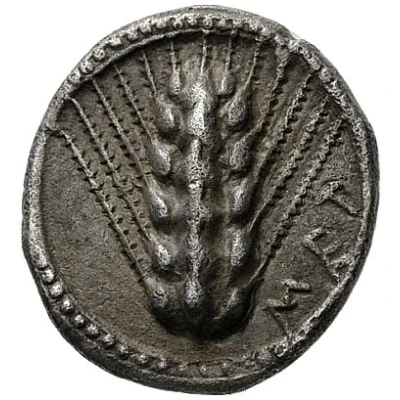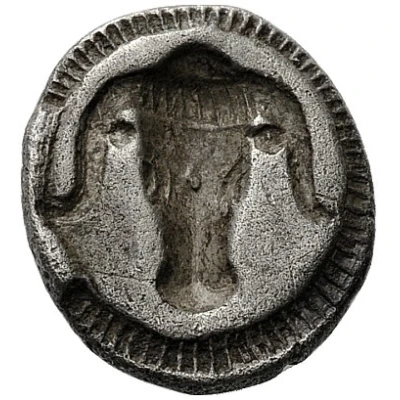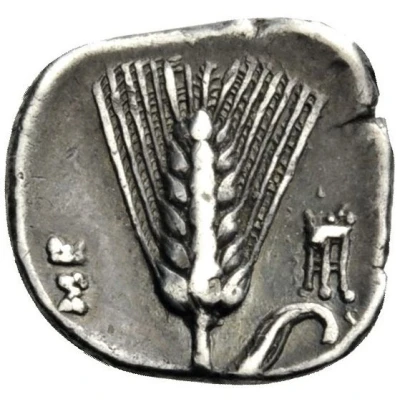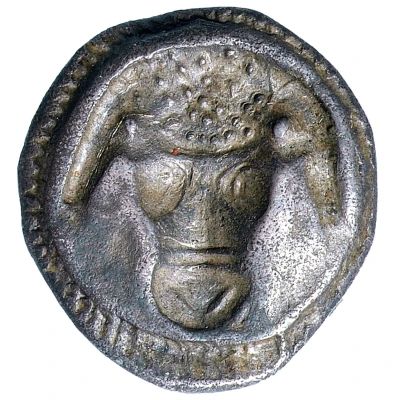


© Nomos AG
Triobol 470 BC - 440 BC
| Silver | 1.39 g | 12.0 mm |
| Issuer | Metapontion (Lucania) |
|---|---|
| Type | Standard circulation coin |
| Years | 470 BC - 440 BC |
| Value | Triobol (½) |
| Currency | Drachm (540-200BC) |
| Composition | Silver |
| Weight | 1.39 g |
| Diameter | 12.0 mm |
| Shape | Round (irregular) |
| Technique | Hammered, Incuse |
| Demonetized | Yes |
| Updated | 2024-10-10 |
| Numista | N#185176 |
|---|---|
| Rarity index | 97% |
Reverse
Bull’s head incuse
Interesting fact
The Triobol coin was used as a form of currency in the ancient Greek city of Metapontion, located in the region of Lucania (modern-day Basilicata), and was minted during the 5th century BC. Despite its small weight of 1.39 grams, the Triobol was a valuable coin in its time and was used to purchase goods and services. Its design featured the image of a youthful male figure, known as a kouros, on one side, and a leafy branch on the other. The Triobol was also used as a means of payment for soldiers and was often given as a reward for athletic achievements.



